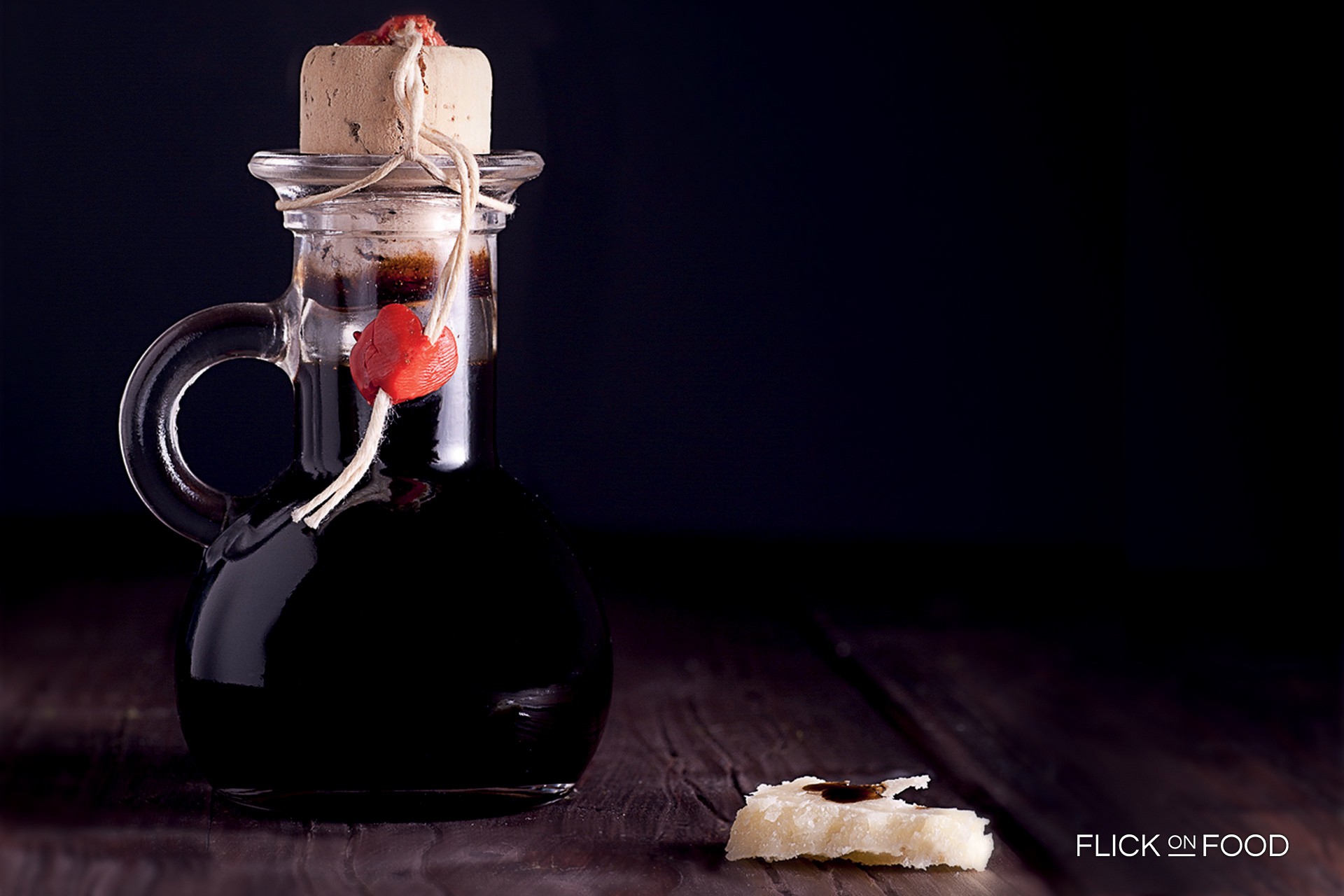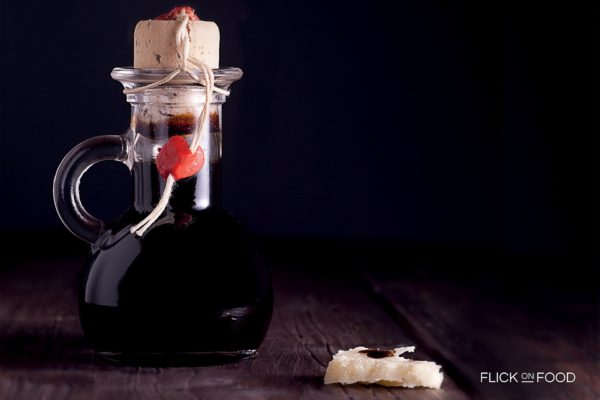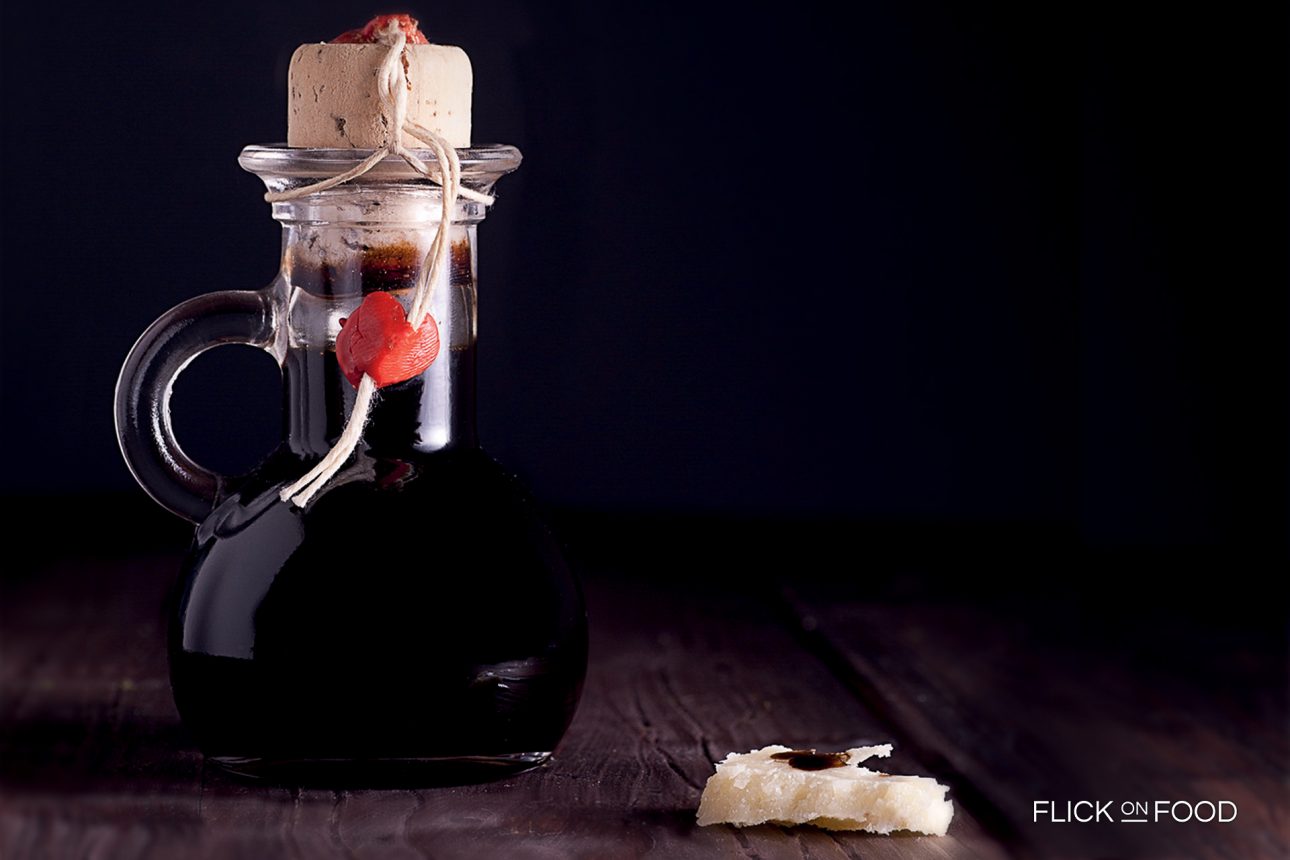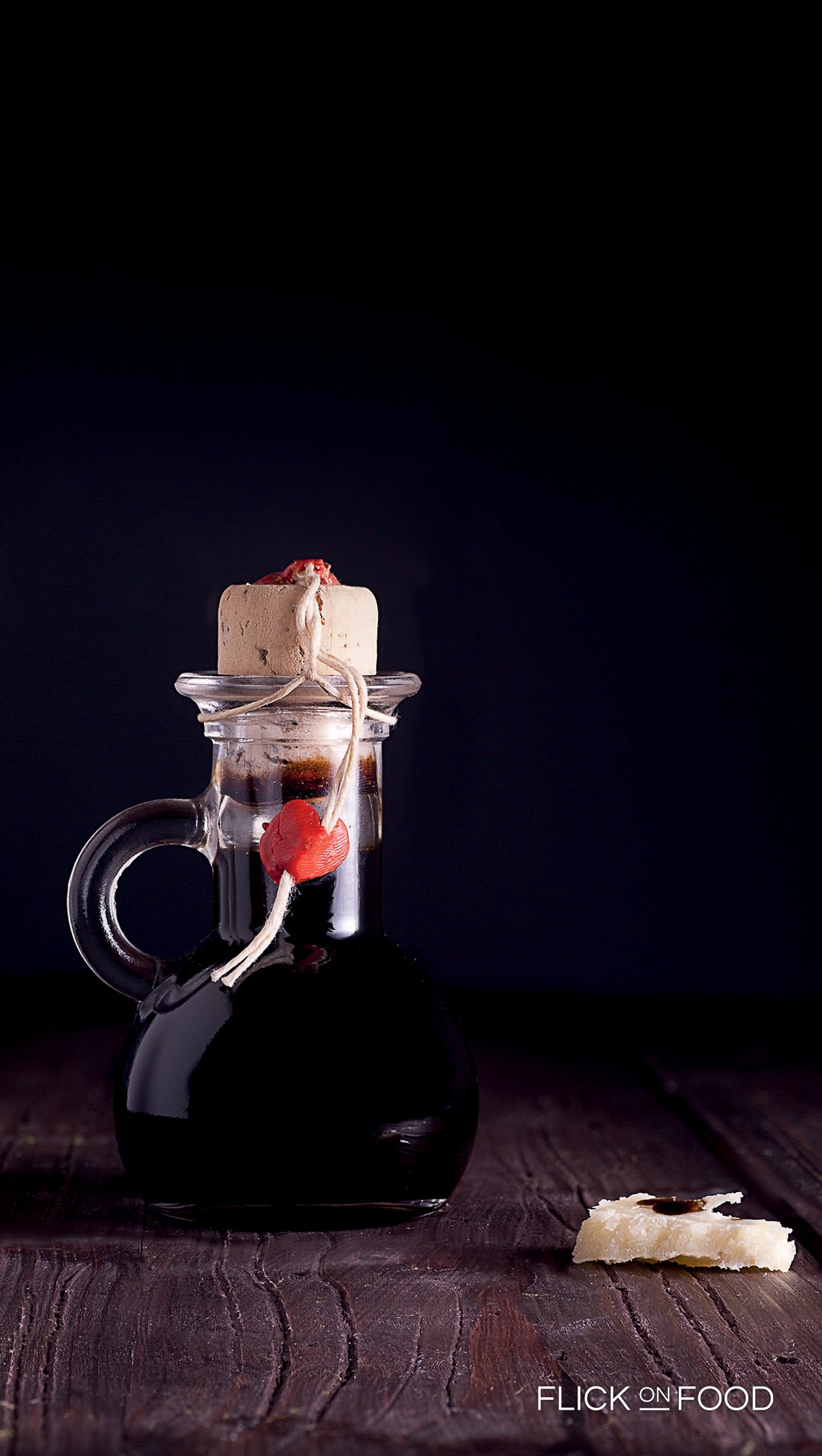
Try it on a frittata for an aromatic touch and a smooth flavor!
Origin
Since the eleventh century, the production of Balsamic Vinegar of Modena PGI has been linked to two cities: Modena and Reggio Emilia. The cooking and fermentation of musts is an ancient process that is tied to the history of the territory. After the grapes are crushed, the must is cooked in uncovered boilers. The cooked must is decanted and begins a natural process of fermentation and acetic biooxidation by yeasts and acetic acid bacteria (AAB). The fermentation enhances the typical balsamic scents, which are further refined during the aging phase. Its balanced compositions is due to carefully chosen must derived from only seven varietals: Lambrusco, Trebbiano, Sangiovese, Albana, Ancellotta, Fortana and Montuni. It is clear and bright, of an intense brown color and bittersweet taste.
Cookit
Balsamic Vinegar of Modena is a very versatile product in the kitchen. Its main strength lies in being able to harmonize and balance the characteristics of each of the ingredients in a dish, both sweet and savory. One of its best-known pairings is with cheese, especially hard ones such as Parmigiano Reggiano. But it is also excellent paired with fish, from cod to pike, over tortellini or boiled meat. With fruit and spoon desserts it is a refined and intense surprise.
Did you know
The preparation process of Balsamic Vinegar of Modena begins with a classic acidification method using selected bacterial colonies and is followed by an ageing phase. Both phases take place inside containers made of precious wood. The minimum ageing period is 60 days. After the product has been aged, it goes through an analytical and organoleptic examination at the hands of a group of expert technicians and tasters. This is the test that the product needs to pass in order to be certified as Balsamic Vinegar of Modena.





